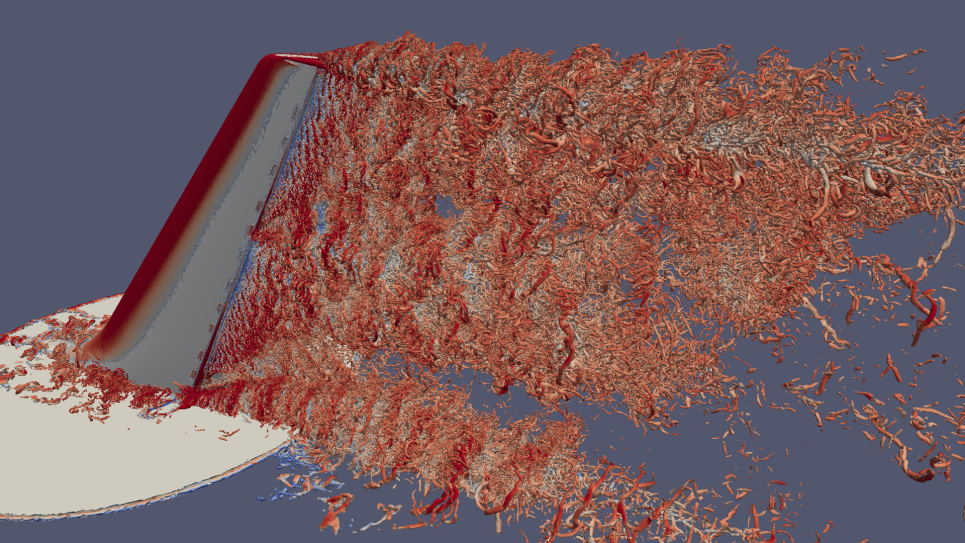
LES to Characterize Shock Boundary Layer Interaction in a 3D Transonic Turbofan
GE Global Research's work on large eddy simulations (LES) has leveraged petascale computing to break barriers in accurately characterizing the key flow physics of multi-scale turbulent mixing in boundary layer and shear flows. The GE LES strategy has been to accelerate its industrial impact by pushing application/validation to realistic conditions and scale, addressing fundamental physics and source characterization challenges and to extend capability to handle complex system interactions.
With this INCITE award, GE, and Iowa State University will use LES to better understand the complexities involved in a real transonic turbofan geometry operating at a high Mach and Reynolds number. Specifically, the team will perform a parametric study of the shock boundary layer interaction problem on a canonical geometry to predict and understand the loss-generation mechanism. The team will then perform full-span fan blade simulations to accurately predict and understand the impact of shock-boundary layer interaction, secondary flows, and wake dynamics on fan blade aerodynamic and aeroacoustic performance. Results from these simulations will also provide a valuable resource for identifying deficiencies in and improving existing turbulence models.
This project will enable future simulations, looking at coupled nacelle-fan simulations as well as advanced engine architectures, such as open rotor configurations. These simulations are critical in enabling design and optimization of the next generation engines, and affect a step-change reduction in energy demand for future air travel.

